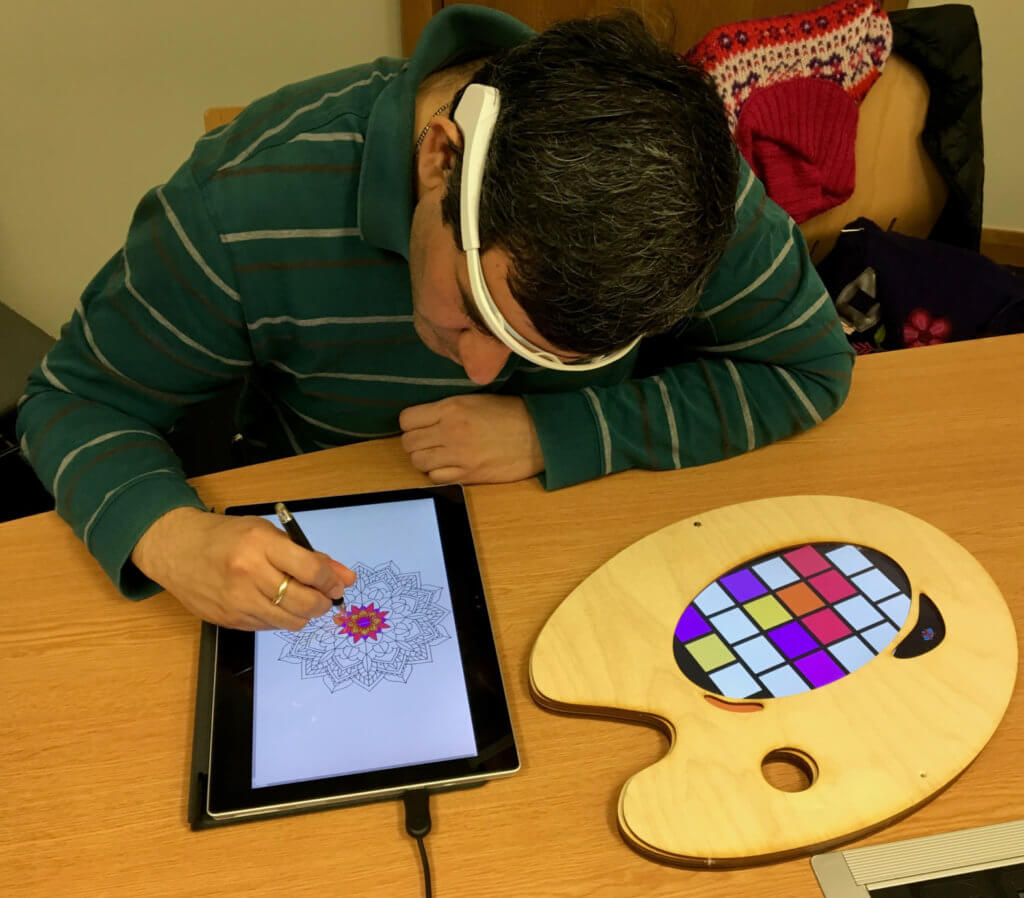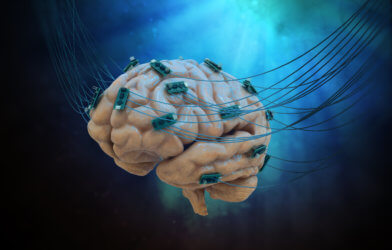“A mandala is the psychological expression of the totality of the self.” – Carl Jung
Combining centuries-old traditional mandala coloring with new, sophisticated computing and brain sensing technologies could lead to new ways of achieving mindfulness.
Mindfulness is the human ability to be fully present, aware of where we are and what we’re doing, and not overly reactive or overwhelmed by what’s going on around us. The goal of mindfulness is to wake up to the inner workings of our physical, emotional, and mental processes.
Mandalas are geometric configurations of shapes that have their origins in Buddhist traditions.
Specialists in human-computer interaction research at Lancaster University in England have developed a device that can monitor the brain signals of people while coloring mandalas. The device generates and displays feedback which indicates levels of mindfulness. The researchers hope that these new technologies can aid learning focused attention techniques which help people deal with stress, depression and other mood and behavior disorders.
The prototype, called “Anima,” included a tablet device for users to color mandala shapes, an EEG headset that reads brain signals, and a peripheral display in the shape of an artists’ palette.

“Making sense of EEG data and capturing it effectively through design is not a trivial process. It was important that the colors appearing on the peripheral display, which was decoupled from the main screen, were ambiguous and subtle to provide the ability for users to openly monitor their mindfulness but not in a way that distracted their attention from the coloring itself,” says Corina Sas, a professor with the university’s School of Computing and Communications, in a statement.
“The study outcomes suggest two important and previously unrecognized roles of the mandala: capturing emotional memories and reflecting on them. Technology could support both these roles in ways paper-based mandalas are less able to do,” she adds.
“By understanding how Anima provides feedback, and reflecting on their coloring session using the data provided by the prototype, people can use these kinds of technologies to help improve their mandala coloring as a focused attention, mindfulness practice,” notes Dominic Potts, a PhD student at the university.
The research revealed new understanding in several additional areas that could lead to the development of new mindfulness technologies.
“In addition, there has been little attention within human-computer interaction research looking at mindfulness techniques that use fine motor skills, such as coloring intricate details on mandalas, or meditation beads,” says Dr. Claudia Dauden Roquet, lead author of the study. “Our findings offer new insight into these areas that could also help inspire new classes of mindfulness technologies.
“This can be extended to the design of peripheral visual feedback designs for other types of technologies monitoring mindfulness training on a main display. This could be wristbands on which real-time visuals may appear in random order as subtle indication of one’s mindfulness state, or as colors embedded in objects, such as backlit mouse pads,” she adds.
The research is published by the journal Human-Computer Interaction.












